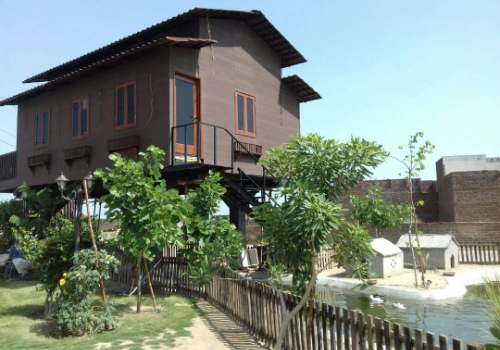
A house elevation utilizing Wood-Plastic Composite (WPC) materials is a testament to modern design and sustainable construction. WPC cladding or siding, composed of a mixture of wood fibers or wood flour and thermoplastic components like polyethylene, polypropylene, or PVC, creates a striking exterior for homes and buildings. Its appearance often mirrors the natural warmth and texture of wood, and it comes in an array of styles, colors, and finishes, allowing architects and homeowners to achieve their desired aesthetic. This results in a house elevation that exudes contemporary elegance and enhances the overall curb appeal of the property. Beyond its visual appeal, WPC house elevations are notable for their durability and eco-friendliness. These materials are highly resistant to environmental factors such as moisture, rot, and insect damage, ensuring that the exterior maintains its structural integrity and aesthetic charm over time. Moreover, WPC often incorporates recycled materials, making it an environmentally conscious choice that contributes to sustainability. Additionally, the low maintenance requirements of WPC house elevations, which typically involve only occasional cleaning, make them a practical and cost-effective solution for homeowners and builders seeking an attractive and sustainable elevation option for their homes or structures.
HOUSE FRONT ELEVATION
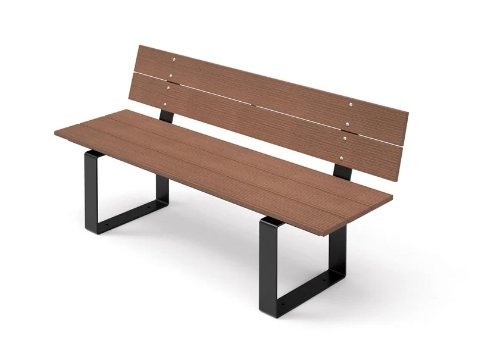
WPC (Wood-Plastic Composite) benches offer an elegant and durable seating solution that combines the natural aesthetics of wood with the resilience of plastic. These benches are constructed using a blend of wood fibers or wood flour and thermoplastic materials, such as polyethylene, polypropylene, or PVC. This composition creates a bench that closely mimics the look and texture of real wood while providing superior resistance to environmental factors, including moisture, decay, and insect damage. WPC benches often boast a timeless and inviting appearance, with a variety of finishes and colors available to suit different design preferences and outdoor settings. Whether you're looking to create a cozy seating area in a garden, park, or commercial space, WPC benches offer versatility and customization options. One of the key advantages of WPC benches is their durability. Unlike traditional wooden benches that may deteriorate over time due to exposure to the elements, WPC benches remain structurally sound and visually appealing for years. They require minimal maintenance, typically limited to occasional cleaning, making them a practical and cost-effective choice for outdoor seating solutions that offer both aesthetics and longevity.
WPC Benches
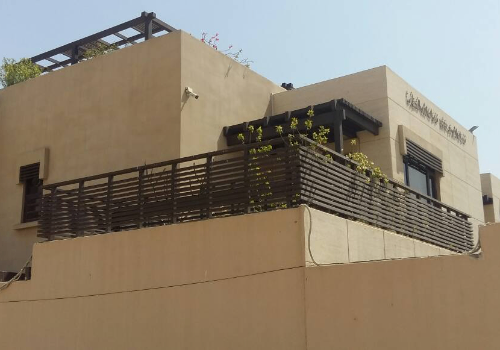
Wood-Plastic Composite (WPC) fences offer an appealing fusion of the natural beauty of wood and the durability of plastic, making them a compelling choice for both residential and commercial fencing needs. These fences are constructed from a composite material comprising wood fibers or wood flour and thermoplastic materials like polyethylene, polypropylene, or PVC. The result is a fencing solution that authentically mimics the texture and appearance of real wood while providing exceptional resistance to moisture, decay, and the harmful effects of insects. The aesthetic appeal of WPC fences is a standout feature. They come in an array of styles, textures, and colors, closely resembling genuine wood with options to match different wood species. Whether you prefer the classic elegance of cedar or the timeless look of oak, WPC fences offer a visually pleasing and customizable choice to enhance the curb appeal of your property. Furthermore, WPC fences are built to last, as they do not warp, splinter, or rot over time. Their robust construction ensures that they remain structurally sound even when exposed to varying weather conditions, making them a practical and cost-effective fencing solution that requires minimal maintenance.
Wpc fences
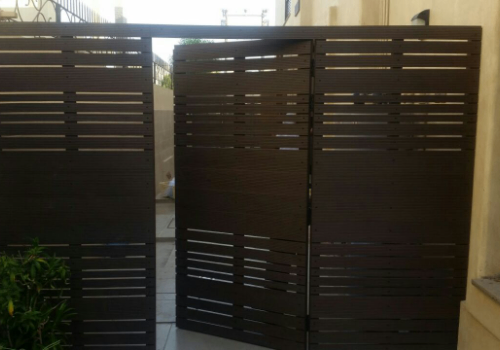
WPC (Wood-Plastic Composite) gates are a contemporary and durable alternative to traditional wooden gates, combining the aesthetic appeal of wood with the enhanced durability of plastic. These gates are crafted from a blend of wood fibers or wood flour and thermoplastic materials, such as polyethylene, polypropylene, or PVC. This unique composition creates a gate that closely resembles the look and feel of natural wood while offering superior resistance to moisture, rot, and insect infestations. WPC gates are prized for their timeless and visually pleasing appearance. They often feature a rich texture, grain patterns, and a range of colors and finishes, allowing them to complement a wide variety of architectural styles and landscaping designs. Whether you prefer the classic warmth of cedar or the rustic look of oak, WPC gates provide an elegant and customizable option that can enhance the overall curb appeal of your property. One of the key advantages of WPC gates is their exceptional durability. Unlike traditional wooden gates that may warp, crack, or decay over time, WPC gates remain structurally sound and attractive even after prolonged exposure to harsh weather conditions. They do not require regular maintenance such as staining or painting, making them a low-maintenance and cost-effective choice. Additionally, WPC gates are highly resistant to UV rays, ensuring that they retain their color and finish for years, contributing to their longevity and overall value as a practical and aesthetically pleasing gate solution.
WPC Gates
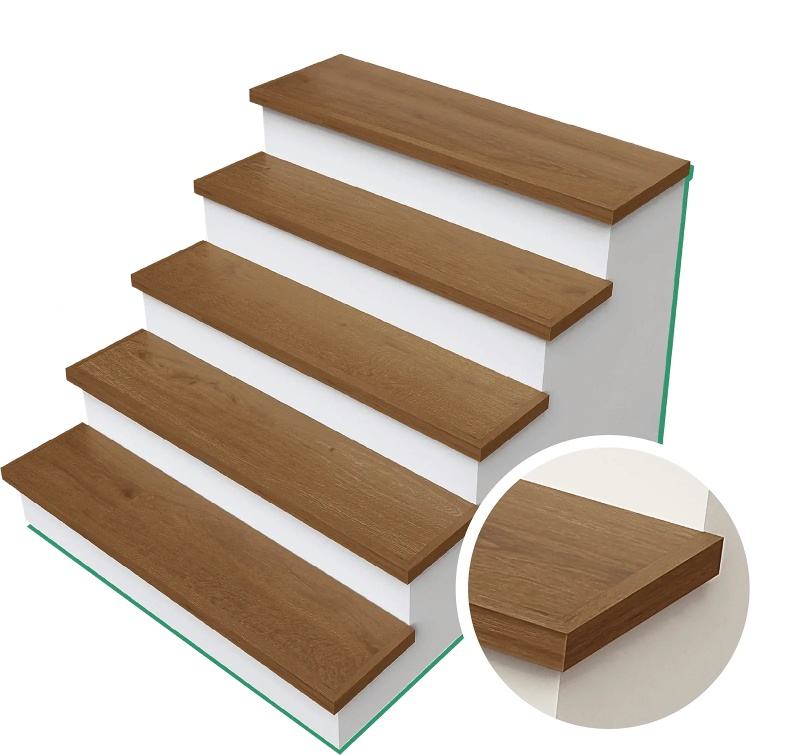
Wood-Plastic Composite (WPC) stairs represent a modern and eco-friendly alternative to traditional wooden staircases, offering a harmonious blend of aesthetics and practicality. These stairs are constructed from a mixture of wood fibers or wood flour and thermoplastic materials, such as polyethylene, polypropylene, or PVC. This composition provides WPC stairs with the visual appeal of natural wood, including rich textures and a range of grain patterns, while delivering enhanced durability and resilience. Unlike natural wood, WPC stairs are highly resistant to environmental factors such as moisture, rot, and insect infestations, making them an excellent choice for both indoor and outdoor applications. WPC stairs offer a versatile and customizable solution for a variety of settings. Their appearance can be tailored to match different wood species, allowing homeowners and builders to achieve the desired aesthetic effect. Whether used for outdoor decks, garden staircases, or interior settings, WPC stairs provide the timeless charm of wood without the maintenance hassles. Additionally, they are often more cost-effective in the long run as they require minimal upkeep and can withstand the challenges of changing weather conditions, ensuring they remain both visually appealing and structurally sound for years to come.
Wpc Stairs
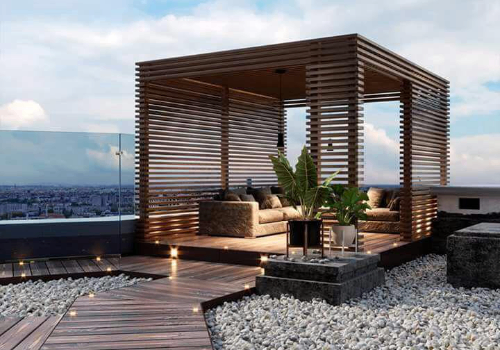
A WPC (Wood-Plastic Composite) gazebo is a versatile and durable outdoor structure designed to provide a comfortable and attractive space for relaxation, social gatherings, or outdoor dining. These gazebos are constructed using a combination of wood fibers or wood flour and thermoplastic materials, such as polyethylene, polypropylene, or PVC. This composite material offers the warm and natural aesthetics of wood while delivering enhanced resistance to environmental elements, including moisture, decay, and insect infestations. WPC gazebos are known for their elegant and timeless appearance. They typically feature a wooden-like texture, grain patterns, and a variety of colors and finishes. This allows them to blend seamlessly with various outdoor settings, from traditional gardens to modern patios. WPC gazebos often provide the charm of real wood without the maintenance challenges, as they retain their color and finish even after prolonged exposure to the elements. One of the significant advantages of WPC gazebos is their durability. Unlike traditional wooden gazebos, they do not require regular staining, sealing, or painting to maintain their appearance. WPC gazebos are highly resistant to rot, decay, and insect damage, ensuring they remain structurally sound and visually appealing for years to come. Their robust construction allows them to withstand various weather conditions, making them a practical and long-lasting addition to any outdoor space.
WPC Gazeebo
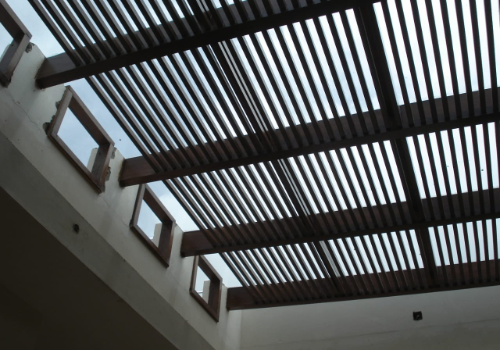
Pergolas crafted from Wood-Plastic Composite (WPC) materials offer an elegant and long-lasting solution for enhancing outdoor spaces. These structures are constructed using a blend of wood fibers or wood flour and thermoplastic materials like polyethylene, polypropylene, or PVC. The resulting composite material combines the natural appeal of wood with enhanced durability and resistance to environmental factors such as moisture, rot, and insect infestations. WPC pergolas often feature a rich and textured appearance that closely emulates real wood. They come in various styles and finishes, allowing homeowners and businesses to choose options that complement their outdoor aesthetics. Whether you prefer a classic look or a more modern design, WPC pergolas provide a versatile and customizable solution for creating shaded and inviting outdoor areas. Additionally, these pergolas are designed to withstand the test of time, maintaining their structural integrity and visual appeal even when exposed to changing weather conditions. Their low maintenance requirements, which typically involve occasional cleaning, make them a practical and cost-effective choice for those seeking both beauty and functionality in their outdoor spaces.
WPC Pergolas
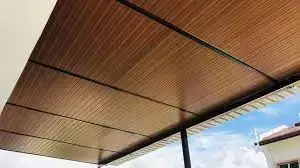
Wood-Plastic Composite (WPC) ceilings are a versatile interior or exterior ceiling material renowned for their combination of natural aesthetics and durability. These ceilings are crafted from a composite material comprising wood fibers or wood flour and thermoplastic materials like polyethylene, polypropylene, or PVC. This unique composition provides WPC ceilings with the appearance of real wood while offering enhanced resistance to moisture, humidity, rot, and insect infestations, making them suitable for a wide range of indoor and outdoor applications. WPC ceilings often feature a warm and textured appearance that closely resembles the look and feel of authentic wood. They come in various styles, finishes, and colors, allowing for customization to match different design preferences and architectural themes. Whether you're aiming for a rustic, traditional, or contemporary look, WPC ceilings provide an adaptable and visually appealing solution that can elevate the overall ambiance of a space. Beyond their aesthetics, WPC ceilings are prized for their durability. Unlike traditional wooden ceilings that may warp, crack, or suffer from moisture-related issues, WPC ceilings maintain their structural integrity and visual appeal even when exposed to varying environmental conditions. This durability extends their lifespan and reduces the need for frequent maintenance. WPC ceilings are also resistant to fading and staining, ensuring that they retain their color and finish over time. These qualities make them a practical and cost-effective choice for ceiling applications that require both beauty and resilience, whether it's in residential homes, commercial spaces, or outdoor structures.
WPC Ceiling
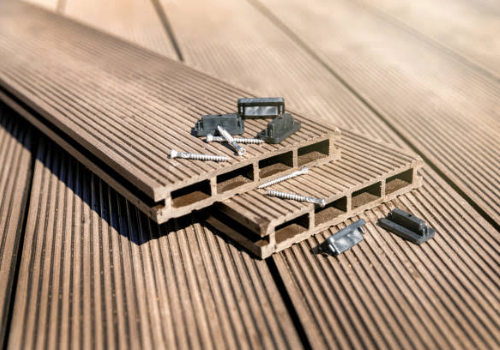
To be added